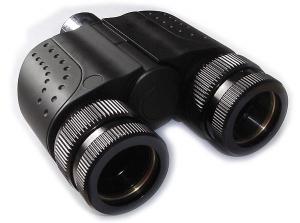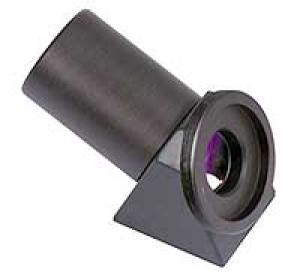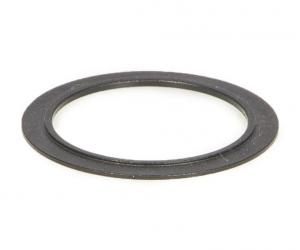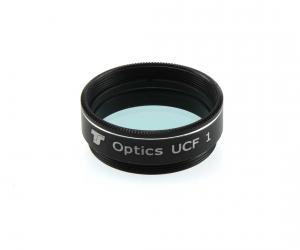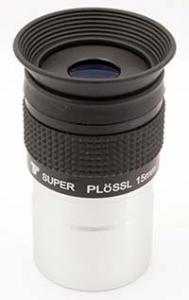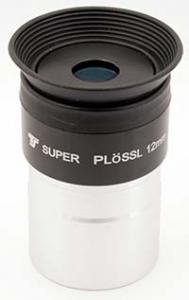- Telescopes
- Overview:
Telescopes - Achromatic Refractor
- Apochromatic Refractor
- Overview:
Apochromatic Refractor - ED Refractor - less color aberration than an achromatic
- SD APO - color free 2-element APO objective
- EDT APO - 3 element ED objective
- High End APO with 3-element APO objective - no color aberation
- Flatfield APO with flat field for Astrophotography
- All Apos and EDs from all manufacturers - large overview
- TS APO and ED from Japan with high quality optics
- Overview:
- Newtonian Telescopes
- Dobsonian Telescopes
- RC Ritchey Chretien Telescopes
- Casssegrain Telescopes
- Reflektor Telescopce with Lens Correcture
- Maksutov Cassegrain Telescopes
- GoTo Telescopes
- Solar Telescopes H-Alpha
- Overview:
- Mounts Tripods Rings Rails Power Supply ...
- Overview:
Mounts Tripods Rings Rails Power Supply ... - Mounts Equatorial with GoTo
- Mounts Equatorial without GoTo
- Mounts Azimutal with GoTo
- Mounts Azimutal without GoTo
- Mounts GoTo - Harmonic Drive
- Travel mounts for astro imaging
- Tripods Piers Polar Wedges
- Mount Control & Electronics
- Dovetail Clamps, Plates and Mount Adapters
- Tube Rings
- Power Supply
- Counterweights Balance Weights
- Mount Accessories - Other
- Overview:
- Telescope Accessories
- Overview:
Telescope Accessories - Eyepieces
- Barlows & Reducer Lenses
- Diagonal Mirrors and Prisms
- Binocular Viewers
- Finder Scopes
- Telescope Collimation and Test
- Cleaning Tools
- Transport and Storage
- Dust protection for Telescopes & Accessories
- Stray Light Protection
- Dewcaps and Heater
- Focusers, Adapters, Motorfocus
- Telescope DIY & Improvement
- Other telescope accessories
- Replacement Parts
- Overview:
- Filters
- Overview:
Filters - Color Filters and Color Filtersets
- Nebular Filters for Visual Observing
- Neutral-Density and Polfilter
- Photo Narrowband Nebular Filters
- Photo Broadband Filters
- Photo Planetary Filters
- Photo R-G-B and IR Cut Filters
- Photo - Filtersets
- Photometric Filters
- Clip Filter for DSLR Cameras
- Filter Wheels and Filterslider
- Solar Filters for white light
- Solarfilter for H-Alpha and Calcium
- Overview:
- Adaptors
- Overview:
Adaptors - Adapter 1,25" and 24,5mm
- Adapter 2"
- Adapter T2 - M42x0.75
- Adapter M48x0,75
- Adapter M54
- Adapter SC
- Adapter M63
- Adapter M68
- Adapter to other Threads
- Adapter Extensions
- Adapter camera bayonet
- Adapter Objective Filterthread
- Adapter Quick Changing , Rotation
- Adapter Eyepiece Projection
- Adapters Tilting
- Overview:
- Astrophotography and Photography
- Overview:
Astrophotography and Photography - Cooled Cameras
- Cameras without Cooling
- Deep-Sky Cameras uncooled
- Set-Offers Camera, Filter, Wheels
- Acessories for Cameras
- Travel mounts for astro imaging
- Imaging Correctors for Telescopes
- Autoguiding Cameras & Sets
- Everything for Guiding
- Focusing aids - Bahtinov mascs
- Flat Field foils and boxes
- Lenses for Cameras
- Piggyback Camera Holder
- Camera Bags, Photocases & more
- Digital Camera and Smartphone Adapter
- Other photo accessories
- Overview:
- Binoculars, Spotting Scopes, Microscopes, Range Finders
- Overview:
Binoculars, Spotting Scopes, Microscopes, Range Finders - Spotting Scopes and Acessories
- Roof Prism Binoculars
- Binoculars with Porro prisms
- Binoculars from 100mm Aperture
- Binoculars with 1,25 inch eyepieces
- TSMX APO Binoculars
- Binoculars for Astronomy
- Binoculars Hiking Bird watching
- Monoculars - Opera Binoculars
- Accessories for Binoculars
- Range Finders
- Microscopy
- Bags for Phototripods & Binoculars
- Overview:
- Phototripods and Binomounts
- Books, Software
- Overview:
Books, Software - Books for Astronomy Beginners
- Star Charts and Planispheres
- Books about our Solar System
- Observing Tips for Amateurs
- Popular Astronomy Literature
- Teaching material
- Astrophotography books
- Telescopes, Observatories, Construction
- Calendars Yearbooks
- Software, Star Charts
- Books for Microscopers
- Books Nature and Animals
- Nature Photography TimeLapse
- Overview:
- Night Vision, Magnifiers, Weather, Domes & more
- Beginner Astronomy and Gift Ideas
- Second Hand & Special Offers
- New products
Manufacturer: Baader
Product number: BA2456460
EUR479.00new
EUR 479,00
incl. 19 % VAT (DE)
The VAT indicated refers to that applicable in Germany. After logging in, the VAT amount is adjusted to the applicable VAT of the stored delivery country. Therefore, the final price may vary accordingly.
excl. 6.95 € shipping costs (DE)
more details to the shipping costs ...Please log in to calculate shipping costs to your country.
rating: 5.0 of 5Baader MaxBright II 1.25" Binoviewer with Case3
- Details..
- Technical data..
- In the box..
- Manufacturer infos..
- Safety informations..
Baader Maxbright II Binoviewer
The MaxBright® II binoviewer has reached market maturity and closes the gap between the low-cost entry-level binoviewers and Baader´s high-end Mark V large-field binoviewer."Supercharged" by design
The MaxBright® II Binoviewer incorporates the knowledge aquired during thirty years of building astronomical binoviewers. It is superior to cheaper models in many details.Attaching to a telescope with eyepiece connector at the back side
In combination with a lens telescope or a Schmidt-Cassegrain we recommend the Baader T2 Star Diagonal # BA2456005 to achieve a compact telescope adaptation. In addition, you can then choose a matching glass path corrector.Important: Without a star diagonal mirror or prism, the image is upside down, so TS definitely recommends using this accessory here.
Choosing a glass path corrector for different telescope systems
To select the right Glasspathcorrector, you need to know the backfocus of your telescope. You can read how to do this in the manual of the Maxbright® II Binoviewer.For Newtonian telescopes Baader recommends a glass path corrector in any case. For Newtonian telescopes that are also suitable for photography, the glass path corrector GWK1.7x will suffice, in combination with the 2" adapter # BA2408150. However, it is very tight. The GWK1.7x shortens the glass path of the bino by 41 mm. If you want to play it safe, you can use the GWK 2.6x. With this you will get into focus in any case.
For SC or refractors, a glass path compensation is often not necessary, because there is enough backfocus available. Nevertheless, we recommend at least the GWK 1.25x at least for faster systems to compensate the color error.
At the Schmidt-Cassegrain with f/10 a glass path corrector is not absolutely necessary. Especially for lower magnifications and larger fields of view, the Universal Alan Gee II Telecompressor (UAG II) is a more interesting option here: it shortens the focal ratio to about f/5.9, allowing a brighter image and a larger field of view. Thus, a C8 almost becomes a widefield telescope - with comfortable binocular viewing!
Binoviewers and accessories
Baader Planetarium has more than 30 years of experience in building binoviewers. Therefore they do not offer simple modified microscope binoviewers without further accessories, but complete system solutions.With monocular vision, your brain can only use a fraction of its "computing capacity". In fact, there is a kind of "emergency mode" in the brain so that even image information obtained with one eye can be distributed to both halves of the brain, but the brain has no way of correctly interpreting the "image errors" and above all the "nerve noise" that inevitably occurs during energy transport - just like with a CCD image!
Just as the user of a CCD camera or webcam superimposes several images in the computer, i.e. "stacks" images, the brain can also superimpose the different information from both eyes during binocular vision and in this way - each time in milliseconds - eliminate the imperfections that are not part of the real image.
So it is no wonder that after observing with one eye for a few minutes, you will have to take a rest that your brain demands because it is simply overloaded by the extremely concentrated viewing. In binocular vision, this problem does not exist! You can look as long as you want and remain relaxed. Even with severely impaired vision in one eye, the reduced tension results in an enormous gain in observation quality.
One often hears the criticism that using a binoviewer would split the light into two visual channels and that only 50% of the light intensity reaches each eye. This argument prevents many people from trying out for themselves what a revolutionary effect binocular vision has. But what is forgotten is that 50% of the light reaches each eye and that the energy from both eyes is "reunited in the brain" (more precisely, in the back of the head).
What you then see is by no means 50% darker than it is claimed. The real gain is only visible for someone who has tried it out for himself and has familiarized himself with this kind of seeing for a few minutes. Ultimately, the object doesn´t look darker, but becomes visible more detailed and - more beautiful.
| Prisms: | 27 mm prisms |
| Clear aperture: | 26 mm at telescope side, 25.5 mm at eyepiece side |
| Prism coating: | 7 layer multi-coated |
| Connection telescope side: | T2 internal thread or ZEISS dovetail ring |
| Connection eyepiece side: | 1.25" ClickLock clamping with diopter adjustment |
| Effective optical path: | 110 mm |
| Weight: | 595 grams |
| Manufacturer / Importeur: | Baader Planetarium GmbH |
| Street: | Zur Sternwarte |
| ZIP / City: | 82291 Mammendorf |
| Country: | Germany |
| Telefon number: | +49 8145 80890 |
| Email: | kontakt@baader-planetarium.de |
| Website: | www.baader-planetarium.com |
Safety informations: PDF Download
Recommended accessories
Adaptors
Alternatives to this product - Suggestions from TS
TS-Optics Astro Binoviewer for telescopes, with compression ring
EUR 199,00RRP EUR 249,00you save 20.1% (EUR 50,00)
Barlow, Corrector, Reducer
Customers who bought this product also bought...
Eyepiece-side accessories like Filters
TS-Optics 1.25" UCF Moon Filter, Planetary Filter and Nebula Filter
EUR 19,90RRP EUR 26,90you save 26% (EUR 7,00)
Eyepieces
General Accessories
Reviews
Written by Klaus Breer
on 2025-04-27
"Die Sichtweise über das Binokular kann ich nur empfehlen, da es nun möglich ist, ein dreidimensionales Blickfeld zu beobachten. Dabei wird des Blickfeld noch vergrößert und z.B. ein Kugelsternhufen (M3) mit einem Hintergrundstern scharf abgebildet. Da der Kugelsternhaufen vor dem Stern versetzt erscheint, entsteht ein räumliches Sehen. "
Written by Michael Leckel
on 2023-09-07
"Top Verarbeitung, tadellos justiert, Durchlass funktioniert ohne sichtbare Einschränkung auch für Baader 35mm eudiaskopische Okulare. "
Written by Rodi Oetzel
on 2023-06-14
"Bin sehr zufrieden mit der ware. Kvalität der baader maxbright ist besser als ich gehoft habe. Sehr schnelle bedienung von TS. Immer wieder. Viele Grüsse aus dänemark ***"
Written by Nikolaos Albantis
on 2023-02-03
"Der beste Binokularansatz unter *** ?."
Written by Vincenzo Bevilacqua
on 2020-07-21
"Ottimo prodotto."
Written by ZWALD Claude
on 2020-07-01
"Optically and perfect parallelism adjustment of the optical axes. Mechanically very good except for the misplaced left eyepiece locking lever which is positioned at the end of travel between the two eyepieces. "
Written by Alfredo Paturzo
on 2020-06-27
"Ottimo prodotto."
Written by Víctor Campaña
on 2020-06-19
*****












